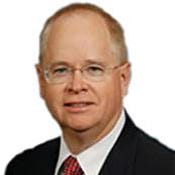American Airlines once had the industry's best business and IT minds and produced the most innovative IT-based products. But now it's staring at bankruptcy.

There are limits to what IT can affect. AA may have had the best IT in the industry, but IT couldn't solve the industry's core cost and labor issues (see above).
As for revenue, IT could only ensure that AA wasn't knowingly uncompetitive by instantly analyzing other carriers' pricing changes. Of course, the other major airlines also continually monitored and matched fares. For all the innovation in revenue management, pricing was still largely determined by factors that IT couldn't address.
Sabre, AA's most visible IT innovation, was successful at selling tickets and automating reservation agencies, but it didn't run the airline any better or cheaper. In fact, several lawsuits and Department of Justice rulings ensured that AA got no advantage (pun intended) over any other carrier just because the reservation agency happened to use Sabre.
All the marketing and pricing innovations yielded a competitive advantage for only a short time. While the AAdvantage system was hugely popular and did more than anything else to build loyalty among AA flyers, other carriers quickly copied it. Within weeks United Airlines introduced Mileage Plus, and within months Delta and TWA introduced their own frequent flyer programs. At that point it was a competitive disadvantage if an airline didn't have a loyalty program.
The same thing happened with every innovation. The other airlines were fast--very fast--followers. Maybe some of their systems weren't as feature-rich as those at AA, but they were initially good enough to protect their customer bases.
AA in the 1980s was an IT-savvy company with a history of IT-based innovation. But those innovations were on the periphery of its core business and, ultimately, they couldn't change the fundamental economics of the industry. By the 1990s, AA was in financial trouble; it was experiencing fallout from its CONFIRM travel reservation system project, combining airline, hotel, and rental car information; and its top IT talent was leaving the company. It failed to duplicate the kinds of breakthrough innovations of the 1980s and became just another airline battling other airlines, fuel costs, labor trouble, and price-conscious customers.
Even in Chapter 11, AMR continues a family feud lawsuit against Sabre Holdings, which owns one of the distribution networks that connects travel agents and the Internet to airline schedules and fares. The airlines, including AA, pay fees to Sabre Holdings for providing that distribution network.
Kayak and other sites provide price comparisons for consumers far better than was envisioned with easySabre. Sabre, Travelport, ITA, and Expedia provide flight search software. Consumers once mystified by airline pricing now have a variety of tools to shop around.
There are few other examples where a company had such a powerful business-IT partnership and capability and yet was unable to flourish. The economics and other challenges of the airline industry made a bankruptcy filing almost certain. I'm encouraged, though, that Hopper's Sabre lives on and flourishes, albeit as a private company. So, while the ability of IT to change the core of some industries is limited, its ability to disrupt and alter the nature of any industry is indisputable.
I just wonder how things would have turned out if Crandall had decided to keep Sabre and dump the airline.
Dr. Larry Tieman has been a senior VP at FedEx, a CIO, or a CTO for the last 20 years. He has worked with some of the great CIOs, including Max Hopper, Charlie Feld, and Rob Carter. He can be reached at [email protected].
InformationWeek is surveying IT executives on global IT strategies. Upon completion of our survey, you will be eligible to enter a drawing to receive an Apple 16-GB iPad 2. Take our 2012 Global CIO Survey now. Survey ends Feb. 7.
About the Author(s)
You May Also Like







